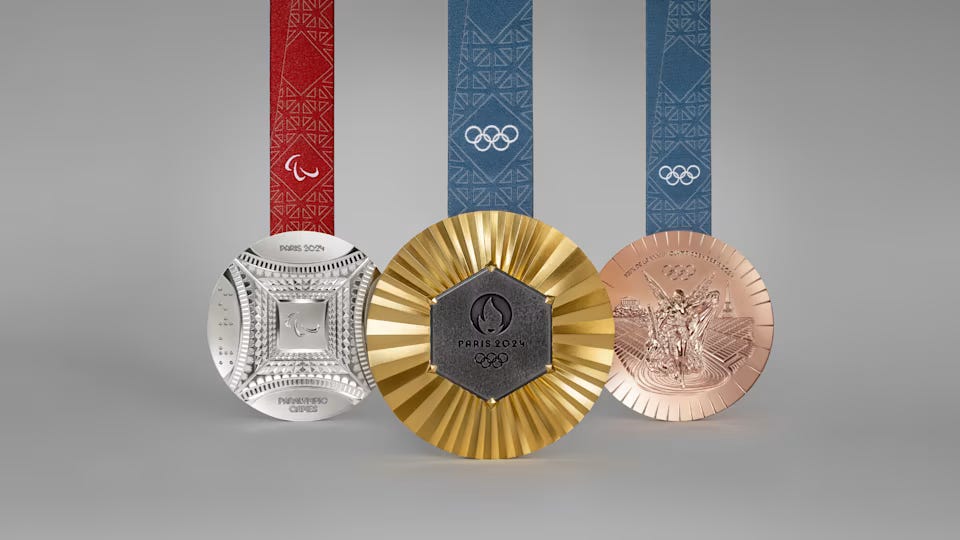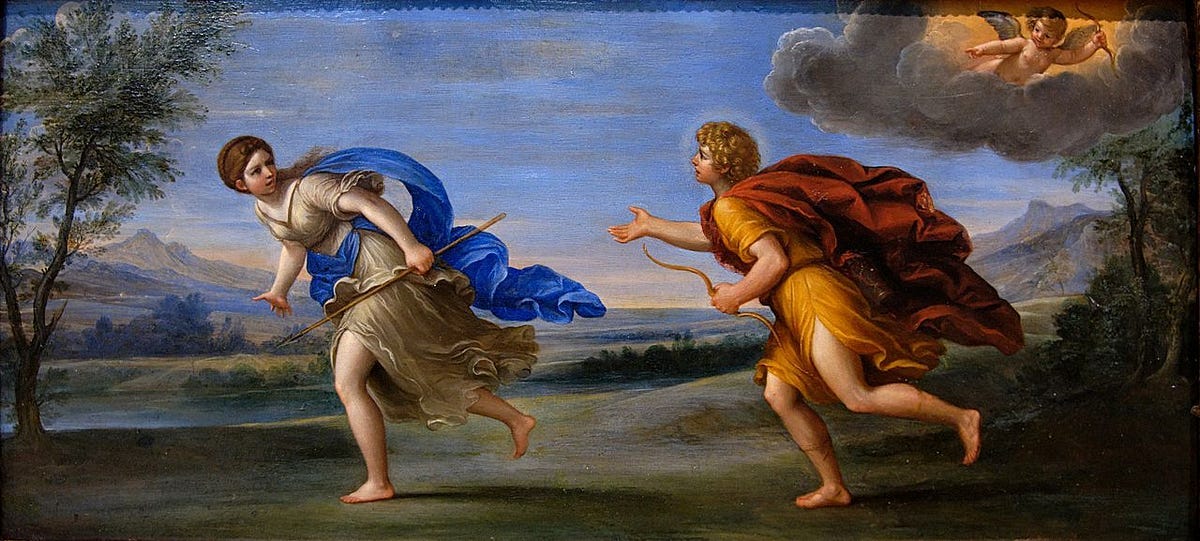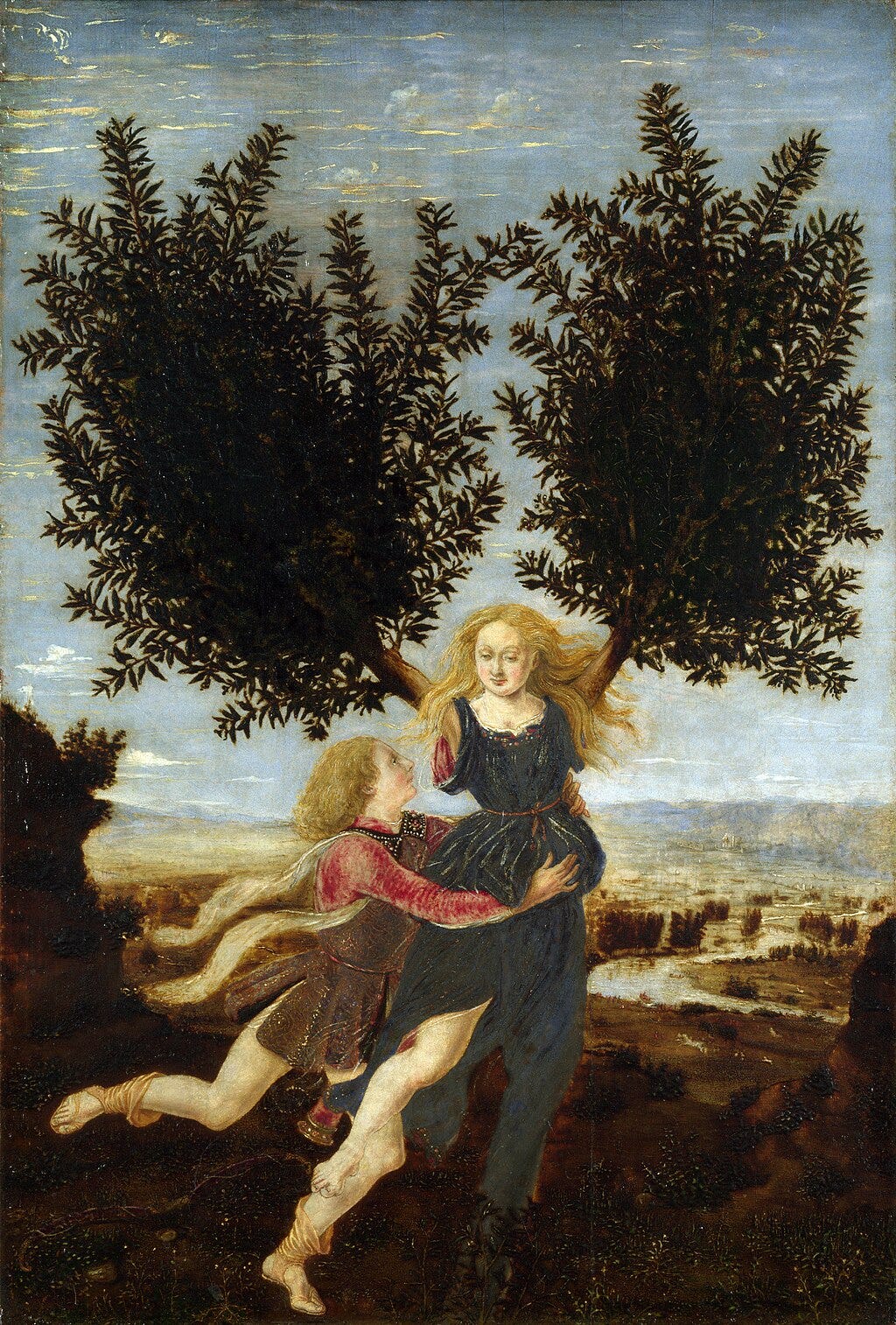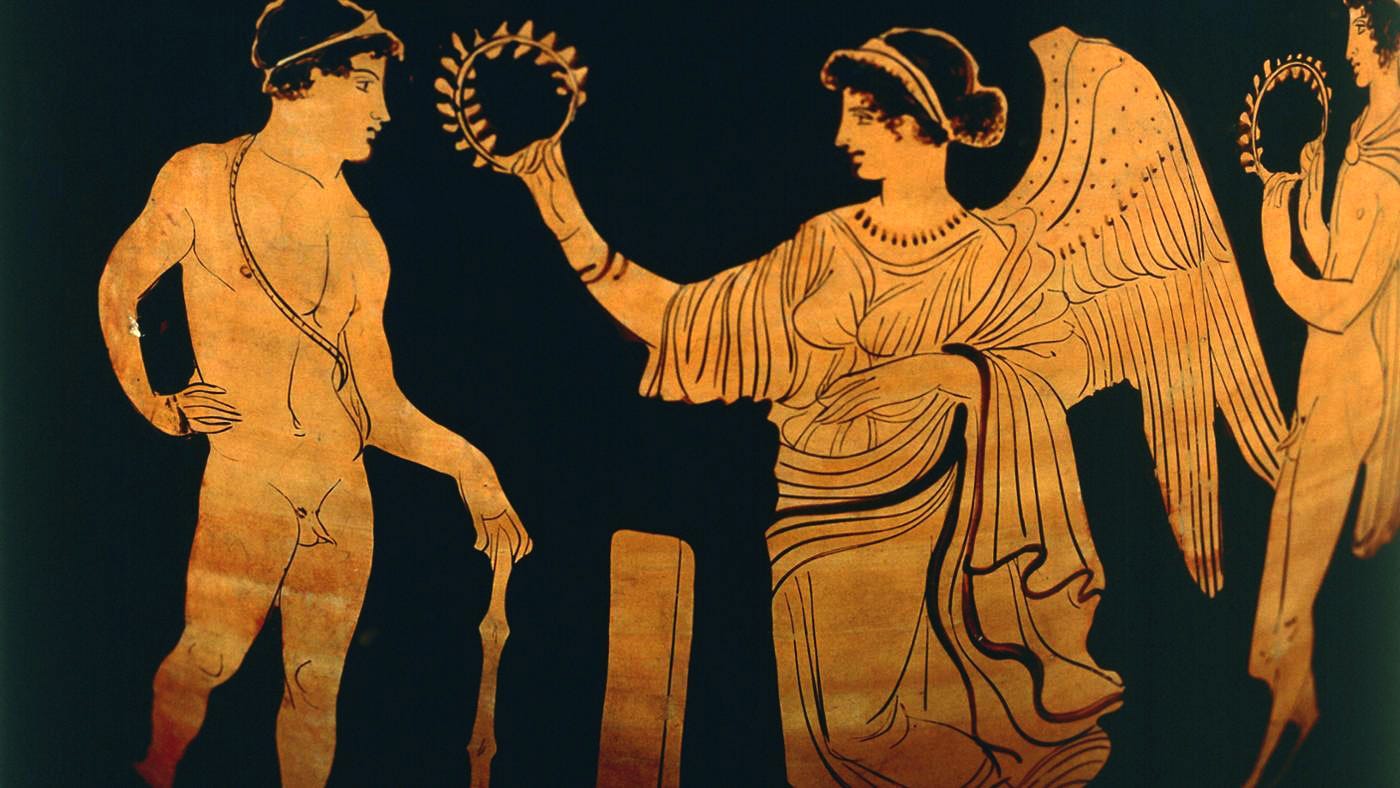Dear Classical Wisdom Kids,
The Olympic medals are packed with symbols and meaning, and those awarded this year in Paris are no different. They include a bit of the Eiffel tower, France’s most famous structure, and are in the shape of a hexagon, the geometrical shape of France herself. They are meant to radiate to illustrate the “radiance of France in the world and the shining performances of the athletes at the Games.”
What do you think? Do they do that?
While we are used to these gold, silver and bronze medallions, in the ancient world the athletes received a very different award: a crown of wreaths…
But why did they get such a prize? What is the meaning behind the leaves? Read today’s myth and learn about the symbol of victory and its origins in the myth of Daphne and Apollo, below.
Enjoy!
All the best,
Anya Leonard
Founder and Director
Classical Wisdom
Daphne: From Naiad to Laurel Tree
Written by Katherine Smyth, Contributing Writer, Classical Wisdom
This year is the XXXIII Olympiad, and once again the world is cheering for their athletes. But, have you ever wondered why in ancient Greece the winners were given Laurel wreaths? Well, it comes from the tale of Daphne…
Daphne was the naiad daughter of the river god Peneus and the nymph Creusa. She was also the unwilling victim of a curse placed by Eros, Aphrodite’s son and the god of love, on his uncle, Apollo.
But why would Eros do this? Well, to prove a point, of course. The story goes that Apollo made a mean remark about Eros’ archery skill. Apollo is the god of archery and sport, so his opinion would normally be very important.
However, Eros was upset and decided to take revenge. He shot two arrows: one to make Apollo madly in love with Daphne and another to make Daphne disgusted by Apollo.
Once hit by the arrow, Apollo saw Daphne and chased her. Daphne, of course, was grossed out by Apollo and ran away. Unfortunately, though, Apollo continued to chase her until they came to a river.
Daphne was upset so prayed to her father, the river god Peneus, to save her. He heard her plea and in a matter of seconds, she was transformed into a laurel tree.
Does the story end there? No.
What Eros didn’t know was that Apollo’s love for Daphne did not end, even though she was now a beautiful laurel tree. Apollo thought the laurel was the best and loveliest of all trees. In fact, Apollo used his eternal youth and immortality to make the laurel tree evergreen, so she would live forever. He also made a wreath from her branches to wear, so he would forever be in her arms.
This turned Daphne into a cultural symbol for him, Apollo, and all other poets and musicians.
In time, when the Pythian Games (one of the four Panhellenic Games) were held at Delphi in honor of Apollo, each victor was garnered with a laurel wreath as their prize. This custom lived on, and as the Olympics took over in popularity of the Pythian Games, the honor of the laurel wreath also continued.
Let Little Readers Read
Download the article to print here:
Go Further
Section for older students and adults
Since those days, nearly a thousand years before Christ, there have been many votives to the memory of Daphne. There have been at least two temples, Artemis Daphnaia in Hypsoi, and Apollo Daphnephoros at Eretria.
There have been several famous artistic renderings of the story, such as Apollon et Daphne by Rubens, Apollo and Daphne by Waterhouse, and Apollo and Daphne by Pollaiolo.
Plasterwork from the 16th century in England has also portrayed Apollo and Daphne, as has the magnificent marble sculpture, Apollo and Daphne, by Bernini at the Galleria Borghese in Rome. Interestingly, most of these depictions show the moment of Daphne’s transformation.
On a culinary note, laurel is used as a common flavoring for many soups and slow-cooked foods. Most cooks and chefs around the world will be familiar with Laurus nobilis, or Bay leaf, for its sweet and aromatic properties.
What did you think? Did you know the myth? Do you like Laurel leaves? What’s your favorite painting of this story? Let us know in the comments!







